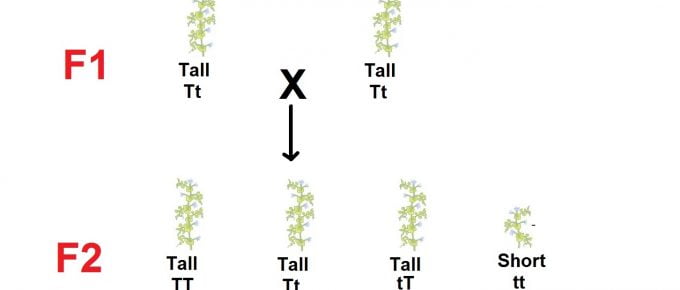

Mendel and his assistants eventually developed 22 varieties of pea plants with combinations of these consistent characteristics. Because the seven pea plant characteristics tracked by Mendel were consistent in generation after generation of self-fertilization, these parental lines of peas could be considered pure-breeders (or, in modern terminology, homozygous for the traits of interest). In the years Mendel spent letting the plants self, he verified the purity of his plants by confirming, for example, that tall plants had only tall children and grandchildren and so forth. The characteristics included height (tall or short), pod shape (inflated or constricted), seed shape (smooth or winkled), pea color (green or yellow), and so on. During this time, Mendel observed seven different characteristics in the pea plants, and each of these characteristics had two forms (Figure 3). First, Mendel observed plant forms and their offspring for two years as they self-fertilized, or "selfed," and ensured that their outward, measurable characteristics remained constant in each generation. This pollen could come from the same flower (self-fertilization), or it could come from another plant's flowers (cross-fertilization). Peas were a good model system, because he could easily control their fertilization by transferring pollen with a small paintbrush.

Mendel was curious about how traits were transferred from one generation to the next, so he set out to understand the principles of heredity in the mid-1860s. Today, whether you are talking about pea plants or human beings, genetic traits that follow the rules of inheritance that Mendel proposed are called Mendelian. These principles eventually assisted clinicians in human disease research for example, within just a couple of years of the rediscovery of Mendel's work, Archibald Garrod applied Mendel's principles to his study of alkaptonuria. Indeed, after eight years of tedious experiments with these plants, and-by his own admission-"some courage" to persist with them, Mendel proposed three foundational principles of inheritance. However, Mendel didn't discover these foundational principles of inheritance by studying human beings, but rather by studying Pisum sativum, or the common pea plant. Our modern understanding of how traits may be inherited through generations comes from the principles proposed by Gregor Mendel in 1865.


 0 kommentar(er)
0 kommentar(er)
